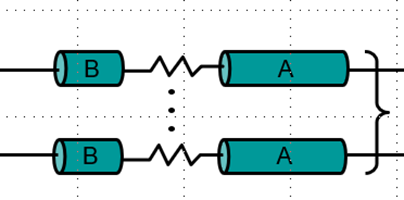How to Master the Game of Setting Rules: Delay Formulas

In the third blog of our series, “How to Master the Game of Setting Rules: Constraint Manager”, we unleash the power of Delay Formulas and their effectiveness to the modern world.
Time is of the essence, and in the world of PCB design, delay formulas hold the key to unlocking precision and efficiency.
With Constraint Manager’s intuitive interface and robust functionality, designers can seamlessly implement delay formulas to control signal propagation time, ensuring optimal performance and reliability. This powerful tool simplifies the design process, helping designers navigate the intricate web of constraints effortlessly.
So what are Delay Formulas? Delay Formulas define the relationship between different pin pairs or different nets to achieve delay routing, they are mathematical representations that help us control the propagation time of signals in our designs.
Formula syntax may consist of constants, variables, or math operations. Depending on the type of delay formula we use, we can achieve specific timing requirements to ensure optimal performance.
Using delay formulas in Constraint Manager is as easy as plugging in the right values and letting the software work its magic. Constraint Manager provides the flexibility and control needed to fine tune your designs.
But it’s not just about achieving constraints; it’s about doing it efficiently. Constraint Manager empowers designers to optimize their designs, reduce iterations, and meet tight project deadlines. It ensures that your designs not only meet functional requirements but also adhere to industry standards and best practices.
For example, for a memory controller chip, it is required to maintain relative length between different trace segments across multiple banks. You can use Delay Formulas to ensure that the length of A1 + B1 = A2 + B2. And combining using Delay Formulas with Constraint Templates will allow you to apply the same rules across tens of nets effortlessly and in no time.

Delay formulas are extensively employed in various applications, including PCB Design. They are used to calculate signal propagation delay, trace length matching, and signal integrity. These formulas help ensure proper timing and minimize signal distortions.
So, if you’re ready to take your PCB designs to the fast lane, harness the power of delay formulas and let Xpedition Flow’s Constraint Manager be your guide. Say goodbye to signal integrity headaches and hello to precise length and delay constraints.
If you’d like to learn more about how to use the Xpedition Enterprise® Constraint Manager, you can take our on-demand training course Constraint Management in Xpedition Flow. This course is also offered in instructor led format by our industry expert instructors and can be tailored to address your specific design goals. Also, you can now earn a digital badge/level 1 certificate by taking our Constraint Management in the Xpedition Flow Exam. If you successfully pass the Level 1 Certification Exams, you can claim a verifiable digital badge and display it on LinkedIn or your email signature.
For additional questions or assistance on this topic, contact a Siemens representative at xceleratoracademy_eda.disw@siemens.com
Authors: Angela Emil, Customer Training Engineer & Moaz Hassan, Senior Customer Training Engineer, Siemens EDA Learning Services


